The Terra Nova
| Builder | Alexander Stephan & Sons Ltd. Dundee, Scotland, 1884 |
|---|---|
| Launched | 1884 |
| Type | Barque / 1 funnel, 3 masts |
| Length | 57m |
| Beam | 9.6m |
| Expedition | British National Antarctic Expedition 1910-1913 |
| Led by | Robert Falcon Scott |
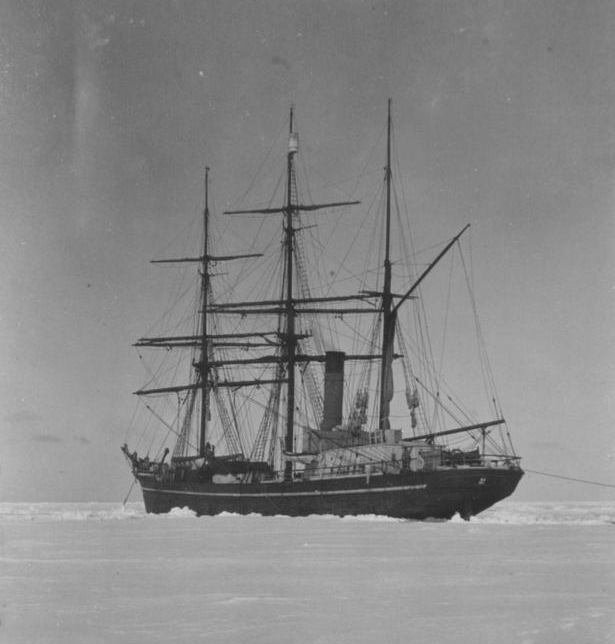
British Antarctic (Terra Nova) Expedition 1910–1913
When Captain Robert Falcon Scott embarked on his second and last expedition in 1910 he was already a famous Antarctic explorer.
He had previously led the National Antarctic Discovery Expedition (1901–04) during which he reached a record 82º11’ South, and a great many scientific and geographical discoveries were made. However, while science and geography remained key objectives to Antarctic explorers of the day, the real prize in the public’s imagination was the South Pole.
Just 18 months before Scott’s second expedition departed, Shackleton had turned back only 97 miles short of the Pole. Aware of how close Shackleton had come to reaching the Pole, Scott planned his British Antarctic Expedition 1910–13 meticulously.
A comprehensive scientific programme was planned for Scott’s second expedition. Dr Edward Wilson was appointed senior scientist and he assembled a competent group of professionals for the shore party with fields including, meteorology, magnetism, glaciology, geology, marine biology and cartography. The Terra Nova, built as a whaler in Dundee and used as the relief ship on Scott’s first expedition, was selected as the expedition’s vessel.
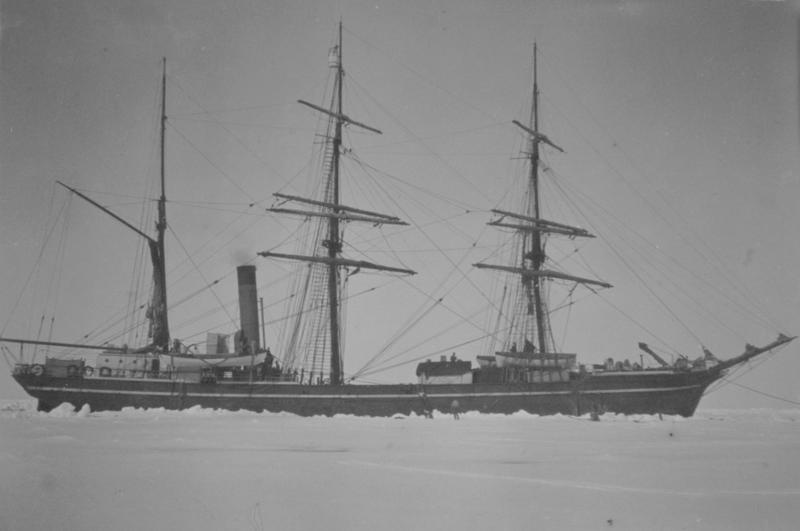
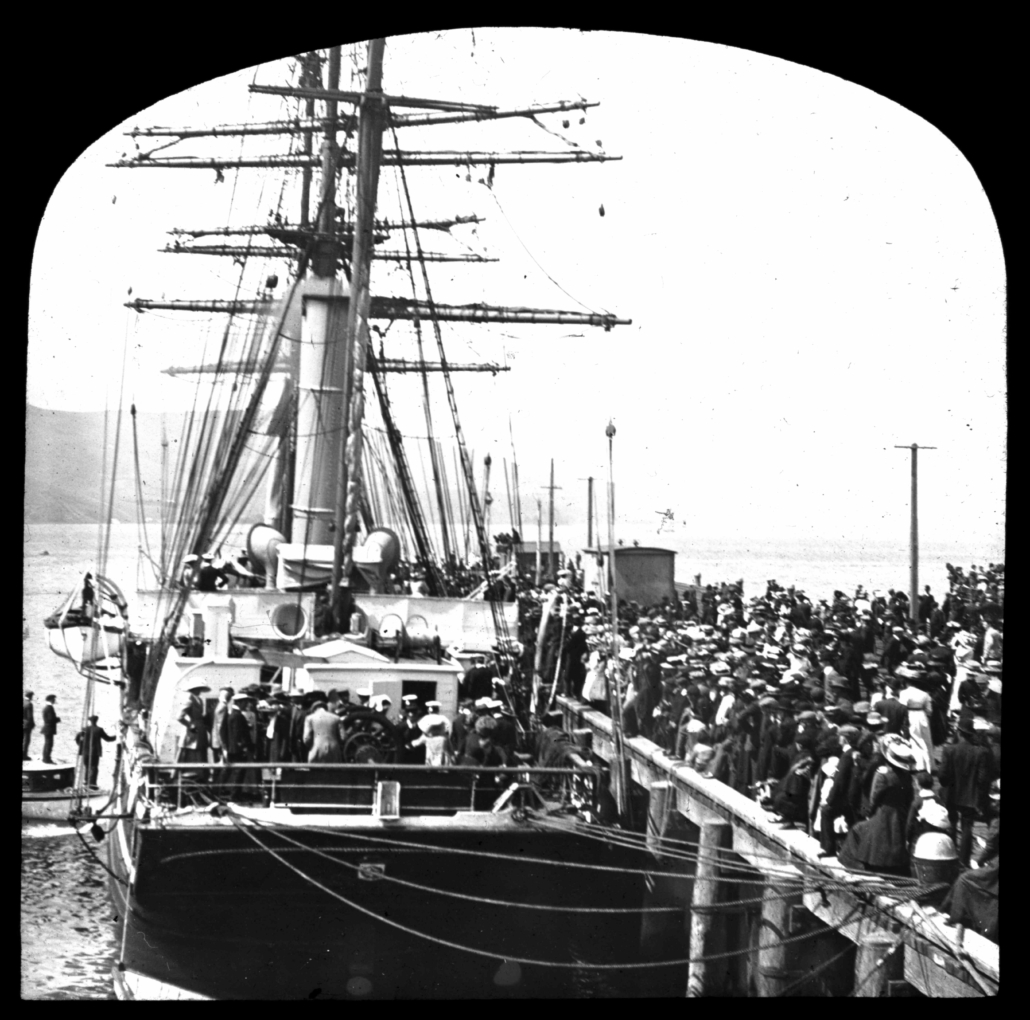
The Terra Nova left London on 1 June 1910, but Scott travelled later by fast steamer to Cape Town where he joined the ship before it departed for Melbourne on 2 September. While in Melbourne he received news that was to distress him deeply. The veteran Norwegian polar explorer Roald Amundsen had been planning an expedition to reach the North Pole but was thwarted by news that the American, Robert Peary, had reached the Pole on 6 April 1909. Undeterred, Amundsen simply switched his goal to the other end of the planet, pointing his ship the Fram to Antarctica and the South Pole. He left Norway on 6 June 1910 keeping his intentions secret even from most of his crew until he reached Madeira where he sent this telegram to Scott: “Beg leave to inform you Fram proceeding Antarctic. Amundsen”.
Scott worked hard not to convey his concern at Amundsen’s plans to his men and continued preparations for the expedition as they sailed to New Zealand. Terra Nova finally set off from Lyttelton on 29 November 1910, taking on coal in Port Chalmers before departing south. On board was a vast quantity of stores including 162 carcasses of mutton and three carcasses of beef, cheese and butter obtained in New Zealand, and an impressive array of equipment representing the latest technology of the day.
There were three Wolseley motor tractors and drums of Shell petrol, two Siberian and 17 Manchurian ponies (seven Indian Army mules were taken south for the second season), 33 Siberian dogs, a comprehensive selection of Burroughs Welcome medical and photographic supplies, clothing, tools, photographic equipment, sledging equipment, and surveying, navigating and scientific instruments. A large quantity of compressed coal in 12 and 25lb blocks was obtained in Cardiff, and from Australia there were 45 tons of Geelong fodder and a quantity of oil-cake, bran and crushed oats for the ponies. A large number of British schools raised funds and presented the expedition with dogs, ponies, sledges, sleeping bags and tents.
The ship also carried several prefabricated huts. The building designed for the expedition’s winter quarters had been prefabricated in London. A trial erection of the hut took place at Officers’ Point in Lyttelton; this revealed serious deficiencies in the sizes and quantities of some timbers, which were made good before the expedition sailed. In addition, there were three smaller buildings: one, without iron fastenings so that it could be used for magnetic observations, was erected at Cape Evans; a hut for the Eastern Party (later designated the Northern Party) which was erected at Cape Adare, and a third with an observation deck on the roof to be used as a meteorological station at Granite Harbour. This was never unloaded; it was taken back to New Zealand and it stands today on the property that used to belong to JJ Kinsey at Clifton in Christchurch.
Terra Nova hard at work
The voyage south was rough. Not long after leaving New Zealand, Terra Nova was battered by a violent storm that nearly sank her. She then spent weeks pushing through dense pack ice before finally reaching Ross Island in early January 1911. Sea ice blocked potential landing sites at Cape Crozier and Hut Point, so on 4 January, Scott established his main base further north at Cape Evans.
Within hours, men, sled dogs, ponies, motor sledges, and tonnes of supplies were offloaded. Construction began immediately on the prefabricated expedition hut, which measured 15 metres by 8 metres, with a gabled roof rising to 4.3 metres. Once the base was established, Terra Nova continued to support the work of scientific field parties.
The ship ferried Griffith Taylor’s Western Party across McMurdo Sound to Butter Point, where they began geological surveys of the Ferrar and Taylor Valleys and surrounding areas. At the end of the season, the team sledged back to Cape Evans across the sea ice.
In early February 1911, Terra Nova sailed east and reached the Bay of Whales, where the crew was surprised to find Roald Amundsen’s Fram already anchored with 116 dogs. Amundsen and members of his team visited Terra Nova for a cordial lunch before the British ship returned to Cape Evans.
On 18 February 1911, Terra Nova dropped Scott’s Northern Party at Cape Adare, where they would carry out geological and meteorological work. Afterward, the ship returned to New Zealand for the winter.
A year later, Terra Nova returned to Antarctica. On her way south, she picked up the Northern Party from Cape Adare and, on 8 January 1912, dropped them off at Evans Cove to conduct further geological work, with the intention of collecting them a month later.
However, worsening sea ice conditions prevented the ship from reaching Evans Cove as planned. The six men of the Northern Party were forced to winter in a cramped ice cave on Inexpressible Island, surviving on limited rations and seal meat. They eventually made their own rescue, walking over 300 kilometres back to Cape Evans, where they finally arrived on 7 November 1912, nearly two years after first being dropped at Cape Adare.
Terra Nova then continued south to resupply Scott’s base at Cape Evans, arriving there on 22 February 1912.
Quest for the Pole
Meanwhile, Scott’s polar party, Edward Wilson, Henry Bowers, Lawrence Oates, and Edgar Evans, set out from Cape Evans in late 1911. After months of harsh conditions and physical strain, they reached the South Pole. There, they were met with the bitter realisation that Norwegian explorer Roald Amundsen had already arrived 34 days earlier. Disheartened but determined, Scott’s team began the long journey northward.
Facing extreme cold, blizzards, injuries, and exhaustion, the men gradually succumbed to the conditions. Edgar Evans was the first to die, near the base of the Beardmore Glacier. As temperatures dropped and rations dwindled, Lawrence Oates, suffering from frostbite and slowing the group’s progress, famously stepped out of the tent saying, “I am just going outside and may be some time.”
Wilson, Bowers, and Scott made it within 18 kilometres of a prearranged supply depot before they too perished. Their final camp was discovered eight months later by a search party from Cape Evans. Scott’s diary, found beside his body, recorded the party’s final days and cemented their story in Antarctic history.
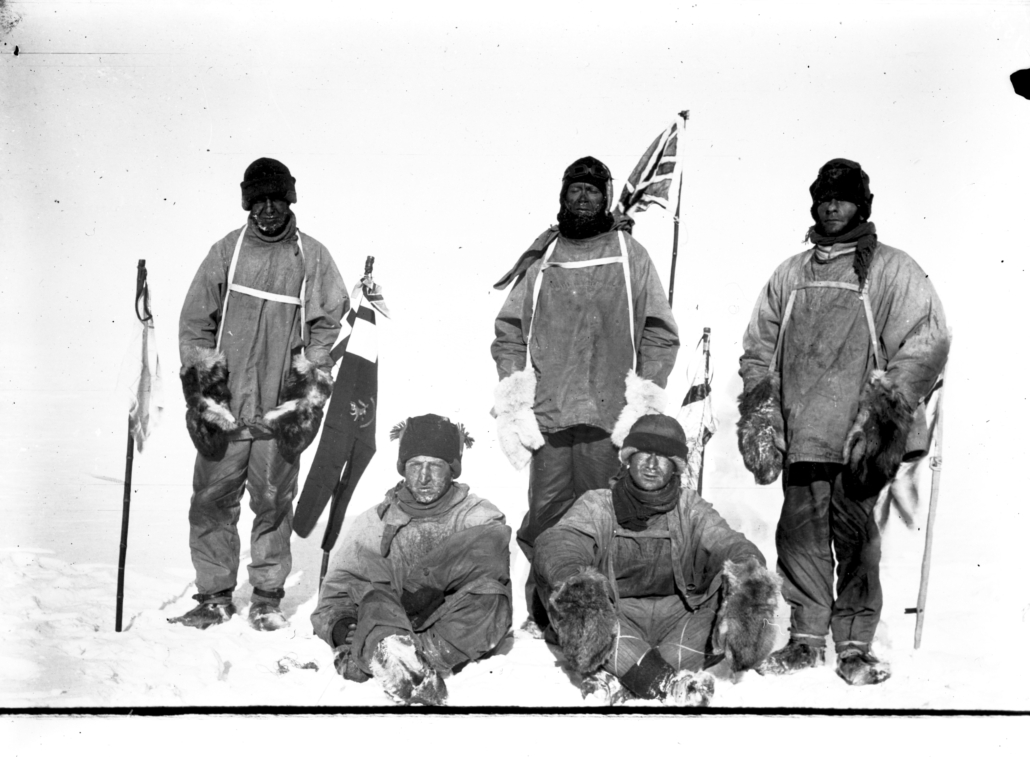
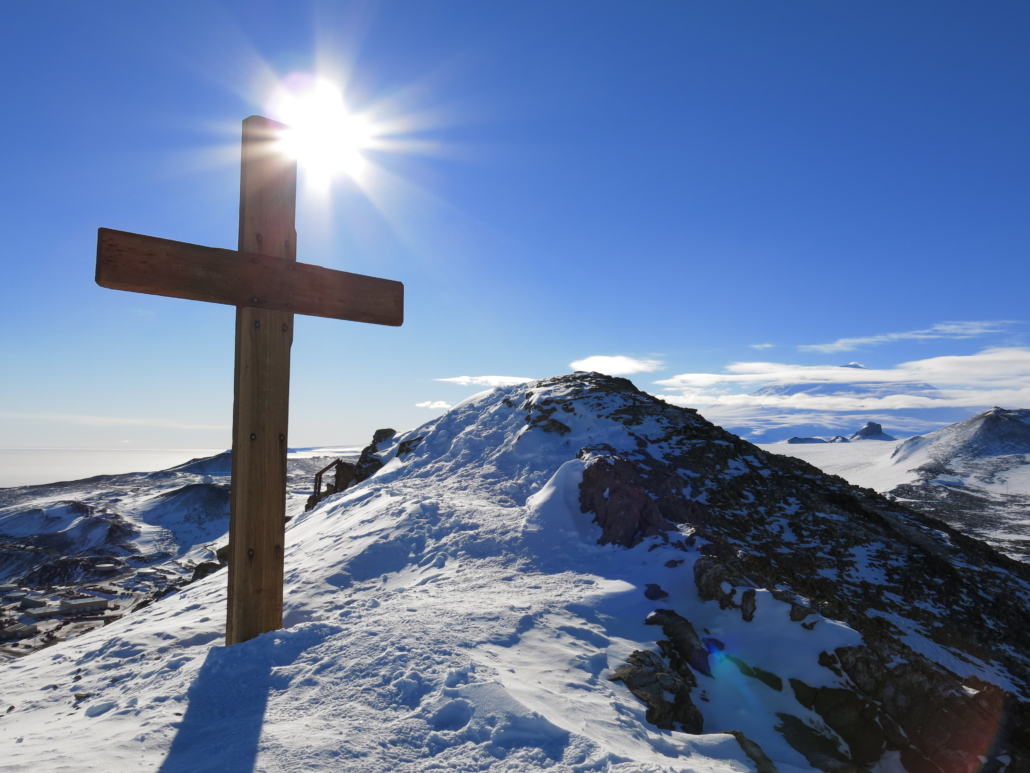
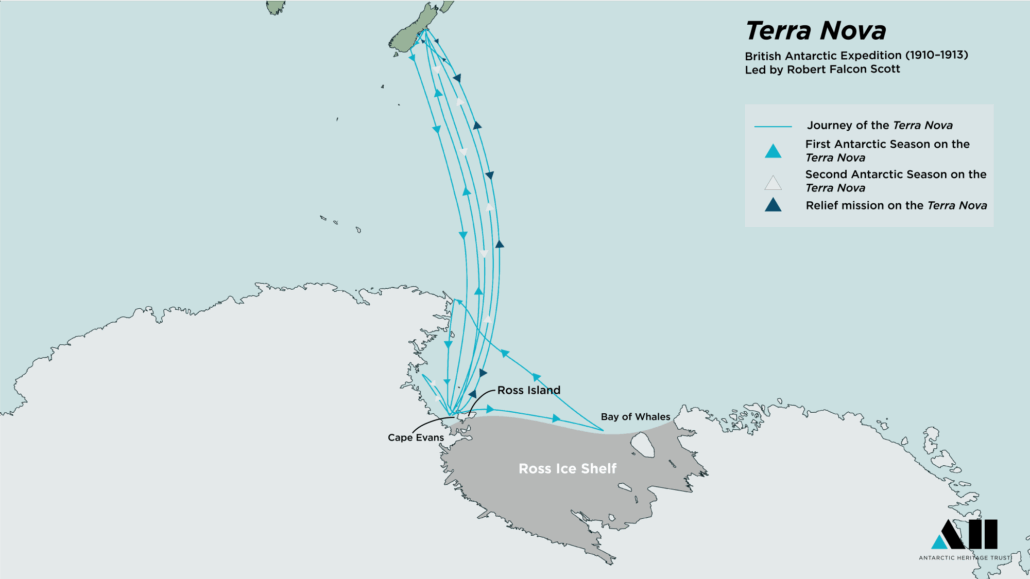
The Fate of the Terra Nova
After completing her final relief voyage to Antarctica in early 1913, the Terra Nova returned to Britain. Her long and distinguished polar service behind her, she resumed duties as a commercial sealing and exploration vessel.
In 1943, while on a supply run to Greenland during the Second World War, Terra Nova met her end. She was damaged by ice and began taking on water. The crew were rescued by a United States Coast Guard cutter, and the decision was made to scuttle the ship. On 13 September 1943, Terra Nova was sunk by gunfire off the southern coast of Greenland.
Today, the remains of the ship rest on the seafloor. In 2012, the wreck was rediscovered by a team from the Schmidt Ocean Institute, lying upright and largely intact — a silent tribute to one of the most iconic vessels of the Heroic Era of Antarctic exploration.
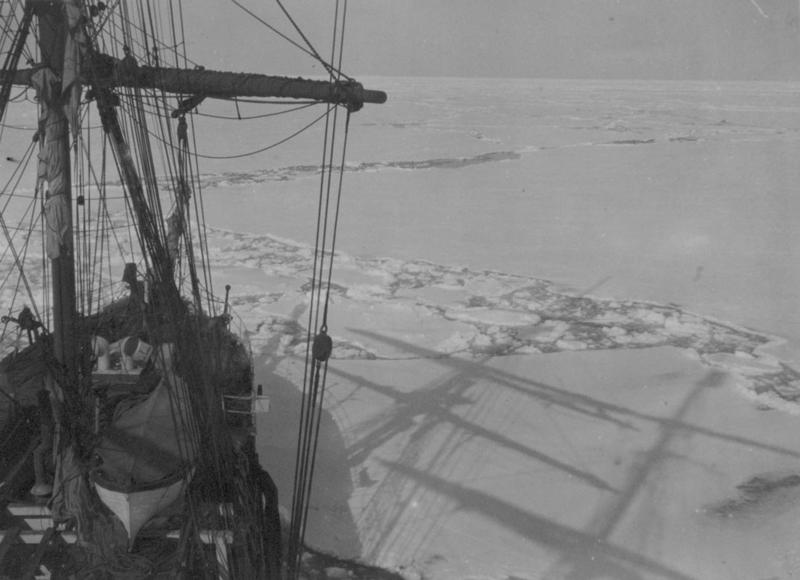
Further Reading
The Worst Journey in the World – The Graphic Novel, Volume 1: Making Our Easting Down
Sarah Airries from the book by Apsley Cherry‑Garrard
Purchase this book from Antactic Heritage Trust: The Worst Journey in the World | Antarctic Heritage Trust
South with Scott
Edward Evans (Lord Evans)
Published 1928
The SS Terra Nova (1884–1943): Whaler, Sealer and Polar Exploration Ship
Michael C. Tarver
Published 2020
With Scott Before the Mast: The Journals of Francis Davies, Leading Shipwright RN, aboard Terra Nova
Francis Davies (edited by Joy Watts & Nicholas Reardon)
Published 2020
![]()
Antarctic Heritage Trust
7 Ron Guthrey Road, Christchurch 8053, New Zealand
Private Bag 4745, Christchurch 8140, New Zealand

© Copyright 2025, Antarctic Heritage Trust Registered Charity: CC24071
Terms and Conditions – Privacy Policy
![]()
Antarctic Heritage Trust
7 Ron Guthrey Road, Christchurch 8053, New Zealand
Private Bag 4745, Christchurch 8140, New Zealand
© Copyright 2025, Antarctic Heritage Trust Registered Charity: CC24071
Terms and Conditions – Privacy Policy
